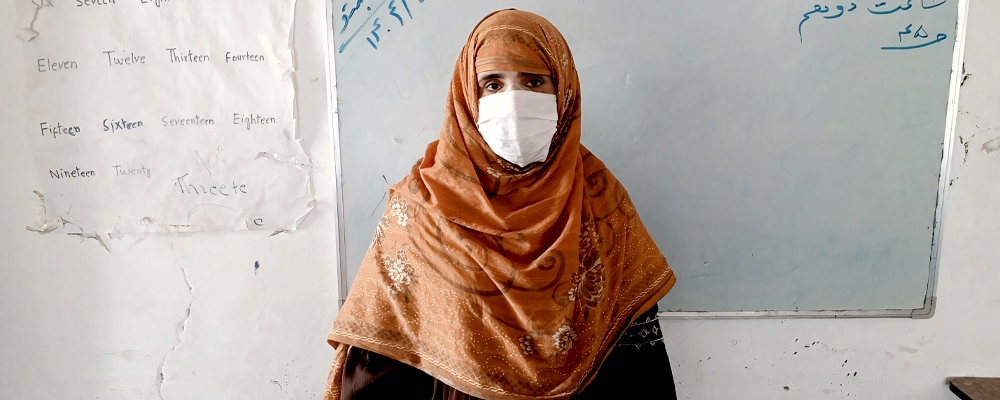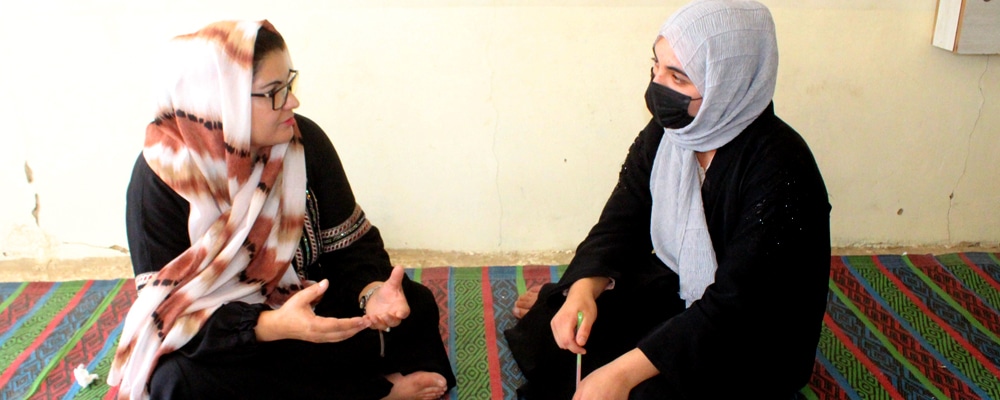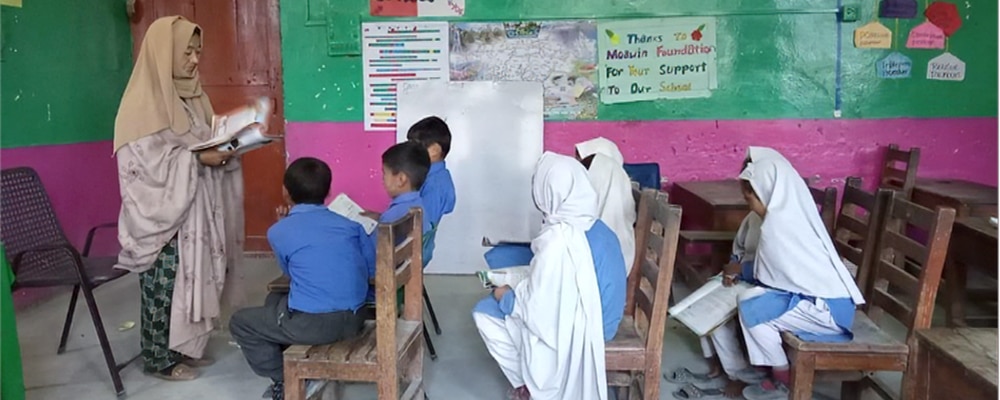Laila’s Story: Educating for Change in Afghanistan

Laila is 32-years old and lives in Asadabad, a city in the center of Kunar province in Afghanistan. She is a teacher whose lifelong passion for learning and teaching has begun to reshape her community. Laila graduated with distinction from the Kunar Teacher Training Institute; however, she had difficulty finding work for a few years […]
When Her Own Schooling Stopped, Madina Helped Others Learn

Madina is a 20-year-old woman living in Chahar Asiab District, on the outskirts of Kabul. Coming from an educated family, she has always believed in the power of learning. After completing 12th grade at Malalai Shaheed High School, Madina dreamed of going to university. However, those plans collapsed when the Taliban banned higher education for […]
From Student to Teacher: Fatima’s Journey of Courage and Change

Fatima, an 18-year-old teacher from the Shigar District of Gilgit-Baltistan, Pakistan, is a beacon of courage and determination in her community. Although her family’s single-room home offered little space and resources for quiet study, Fatima’s dream of becoming a teacher never dimmed. Fatima’s journey began at the Haideria Public School in Shigar. As the eldest […]
From Classroom to Principal’s Office: Sughra’s Story

Sughra’s life is a powerful example of how determination, passion, and commitment can open doors to opportunity. Today, Sughra is the Principal of Sun Valley Public School in the remote village of Kanday, located in the Gilgit-Baltistan region of Pakistan. But her story began in the very classrooms she now leads. Once a student at […]
A Recipe for Success: Sabzbahor’s Story

Sabzbahor Davlatbekova, a 33-year-old entrepreneur from Khorog, capital of the Gorno-Badakhshan Autonomous Region of Tajikistan, has transformed a lifelong love of baking into a thriving business that is uplifting both her family and her community. Although she earned a master’s degree in tourism from Khorog State University, Sabzbahor quickly realized that traditional office work left […]
How to Leave a Lasting Impact: CAI’S Legacy Society

By Marianne Monoc We all strive to find purpose and meaning in our lives. One impactful way is through supporting charitable causes, which can help create lasting positive change in our communities and even the world. For many individuals, including nonprofits in their legacy plans is a natural extension of their lifelong commitment to giving. […]
Unlocking a Treasure Chest of Knowledge: Women’s Economic Empowerment Programs

By Bella Pich and Tonya Andrews At CAI, we believe empowering women is the most effective way to reduce poverty, strengthen families, and foster lasting community resilience. That’s why donor support fuels our Women’s Economic Empowerment Programs—initiatives that equip women with the skills, tools, and confidence to participate in local economies and transform their lives. […]
Not the Lesson I Planned

By Claire Mei Chevallier When I was 18, I attended a talk by a mountaineer who became my role model. Nearly a decade later, her story would lead me to the Himalayas—where I would unknowingly become a role model myself. I sat wide-eyed in a metal folding chair in the backroom of my local REI […]
CAI Board Member Profile – Eileen Shield-West

By Tonya Andrews For Eileen Shields-West, the mission of CAI is more than a cause—it’s a calling. A longtime advocate for displaced communities, Eileen’s deep humanitarian experience and personal connection to CAI’s Executive Director, Alice Thomas, brought her to the organization five years ago. “Our first hire at Refugees International’s climate displacement program was Alice,” […]
CAI Board Member Profile – Moin Khan

By Tonya Andrews For Moin Khan, education is more than a professional interest—it’s a personal mission shaped by years of experience, family history, and deep ties to Central and South Asia. As a CAI board member, Moin brings a rare blend of international development expertise and on-the-ground connection that gives him both clarity and conviction […]
Celebrate With Us: CAI Turns 30

By Marianne Monoc In 2026, Central Asia Institute will turn thirty. For three decades, we have provided sustained support for education and economic opportunity in some of the most remote, impoverished, and underserved communities on earth. Since its founding in 1996, CAI has made quality education possible for countless children and adults, especially for girls […]
Give More, Owe Less? The Benefits of Charitable Giving

By Brittany Heater Philanthropy is more than just making a gift—it can also be part of a savvy financial strategy. When we think about smart money moves, we often focus on cutting back, but what if the smartest way to save more was by giving more? One of the most powerful saving tools may be […]
The Ripple Effect of Educating a Girl

Why her empowerment benefits everyone. By Alice Thomas Central Asia Institute’s mission has long been to promote education as a pathway to opportunity. Since our founding nearly 30 years ago, we have provided countless males and females with education, job skills, and the agency to live a better life. Leveling the Playing Field for Girls […]
Nurturing Safe Learning Environments in Tajikistan

By Seelai Karzai For many years, Central Asia Institute has supported early childhood education across remote, mountainous communities of Tajikistan, particularly in the Gorno-Badakhshan Autonomous Oblast (GBAO) region. This support includes building preschools, renovating classrooms for safety and optimal learning, and training preschool teachers. Why Early Childhood Education is Important Many studies have documented the […]
Shining the Light on Shining Star

By Natalie Meyer* When the Taliban returned to power in August 2021, decades of progress for Afghan women and girls came to an abrupt halt. Since then, girls have been banned from attending school beyond sixth grade. Women have been barred from studying at universities, most jobs are now closed to them, and they can […]
